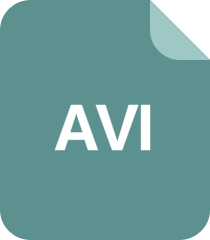
基于小程序的垃圾分类系统的设计与
实现
Design and implementation of garbage classification system based
on small program
学校:
系:
专业:
班级:
学生姓名:
指导教师:
摘 要

针对城市垃圾分类和资源浪费现象,提出了基于 Java 的辅助分类系统,支持
垃圾分类查询和预约回收功能。该系统以系统客户端和手机智能移动客户端(小
程序作为载体,包括基础信息管理、垃圾分类回收管理、用户管理、以及后台系
统管理等,并利用物联网与互联网的融合技术,实现垃圾分类拆线呢和预约回收,
同时大力宣传垃圾分类的利弊,以及垃圾分类后处理过程,帮助民众认识到垃圾
分类的重要性。
关键字:小程序 MINA JavaScript 垃圾分类

Abstract
Aiming at the phenomenon of urban garbage classification and resource waste, this
paper proposes a Java based auxiliary classification system, which supports garbage
classification query and reservation collection function. The system takes the system
client and mobile phone smart mobile client (small program) as the carrier, including
basic information management, garbage classification and recycling management,
user management, and background system management, and uses the integration
technology of Internet of things and Internet to realize garbage classification,
stitching and reservation recycling. At the same time, it vigorously publicizes the
advantages and disadvantages of garbage classification, as well as the
post-processing process of garbage classification, Help people realize the importance
of waste classification.
Keywords: Applets MINA JavaScript refuse classification

目录
1.绪论....................................................................................................................6
1.1 研究背景.................................................................................................6
1.2 研究的意义.............................................................................................7
1.3 论文结构................................................................................................8
2.项目可行性分析................................................................................................9
2.1 系统可行性分析...................................................................................10
2.1.1 经济可行性................................................................................10
2.1.2 技术可行性................................................................................11
2.3 系统需求分析.......................................................................................11
3.相关技术简介..................................................................................................12
3.1 小程序相关技术介绍...........................................................................13
3.1.1 JSON ...........................................................................................13
3.1.2 XML.............................................................................................14
3.1.3 CSS ..............................................................................................14
3.1.4 JavaScript....................................................................................15
3.2 MINA 框架.............................................................................................16
3.2.1 逻辑层........................................................................................20
3.2.2 视图层........................................................................................20
3.2.3 数据层........................................................................................21
3.3 数据库...................................................................................................22
4.开发流程和开发环境......................................................................................24
4.1 微信小程序开发流程...........................................................................24
4.2 项目开发方法及部署环境 ...................................................................25
4.3 数据库设计...........................................................................................26
5.系统设计与实现..............................................................................................27
5.1 注册和登陆功能..................................................................................27
5.2 垃圾分类查询......................................................................................28
5.3 垃圾预约回收......................................................................................29
5.4 垃圾分类功能......................................................................................30
5.5 个人中心功能......................................................................................31
5.5 后台功能..............................................................................................32
6.软件测试..........................................................................................................33
6.1 软件测试的目的...................................................................................33

6.2 软件测试的常用方式..........................................................................34
6.2.1 静态测试和动态测试 ................................................................34
6.2.2 黑盒测试、白盒测试和灰盒测试 ............................................35
6.2.4 手动测试和自动化测试 ............................................................36
6.3 测试用例...............................................................................................36
5.4 测试结果...............................................................................................38
6.研究总结..........................................................................................................38
参考文献.............................................................................................................39
致 谢...............................................................................................................40



















